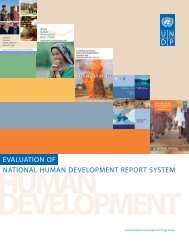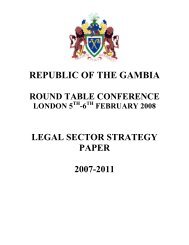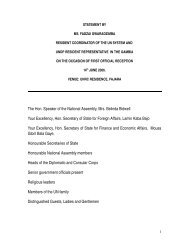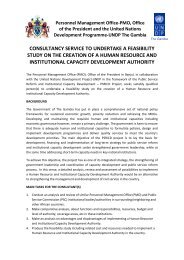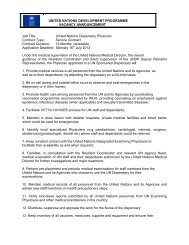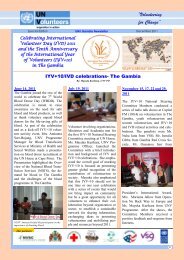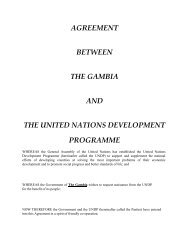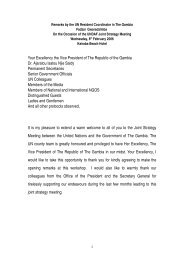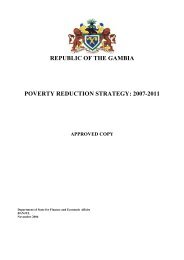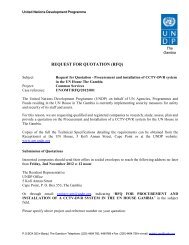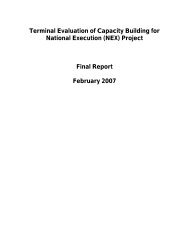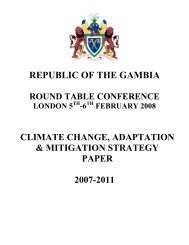Introduction - UNDP The Gambia
Introduction - UNDP The Gambia
Introduction - UNDP The Gambia
Create successful ePaper yourself
Turn your PDF publications into a flip-book with our unique Google optimized e-Paper software.
________________________________________________________________________________________________________________________<br />
3<br />
Capacity Building Challenges and<br />
Opportunities in the Private Sector<br />
CHAPTER PREVIEW<br />
• Capacity Building in Africa: <strong>The</strong> Regional Context<br />
• <strong>The</strong> National Context: <strong>The</strong> Contributions of the Private Sector to the<br />
Attainment of the MDGs and the Objectives of the PRSP<br />
– Millennium Development Goals<br />
– Macro-Economic Performance and the Private Sector<br />
• Contributions of Selected Private Sector Projects to the MDGs<br />
– Capacity Building at the Department of State for Trade, Industry and Employment<br />
– Capacity Building at the Department of State for Tourism and Culture<br />
– Capacity Building at the Department of State for Fisheries and the<br />
Environment<br />
This chapter examines how building<br />
capacity in the private sector could<br />
contribute towards the achievement of<br />
the MDGs. It also identifies the opportunities,<br />
constraints, challenges and issues that the<br />
private sector will have to deal with in order<br />
to contribute effectively towards the<br />
achievement of the MDGs.<br />
Capacity building is essentially a public<br />
domain function and the private sector is<br />
purely seen as a beneficiary. If therefore the<br />
latter is purely a recipient of public policy,<br />
what role can the private sector effectively<br />
play in human development? What are the<br />
capacity areas that the public sector should<br />
address to capacitise the private sector?<br />
3.1 Capacity Building in Africa: <strong>The</strong><br />
Regional Context<br />
Between 1995 and 2004, the World Bank<br />
provided some US$9 billion in lending and<br />
about US$900 million in grants and<br />
administrative budget to support capacity<br />
building in Africa. <strong>The</strong> bulk of the support<br />
however went to public sector capacity<br />
building and not to the private sector.<br />
Traditional donor support and efforts in<br />
building capacity in the public sector in<br />
Africa were primarily focused on creating or<br />
re-organising government units and building<br />
individual skills through training. But<br />
persistent weak public sector capacity<br />
signalled that these strategies were not<br />
producing the expected results.<br />
<strong>The</strong> World Bank, in particular, has now<br />
broadened its support for capacity building in<br />
Africa to include:<br />
• strengthening public institutions that can<br />
facilitate and enhance the performance of<br />
the public and the private sectors<br />
• supporting the creation of an economic,<br />
political and institutional environment<br />
conducive to private sector development.<br />
Globalisation is also widening the gaps within<br />
Africa and between Africa and other regions.<br />
________________________________________________________________________________________________<br />
Building Capacity for the Attainment of the Millennium Development Goals in <strong>The</strong> <strong>Gambia</strong> National Human Development Report 2005<br />
25




